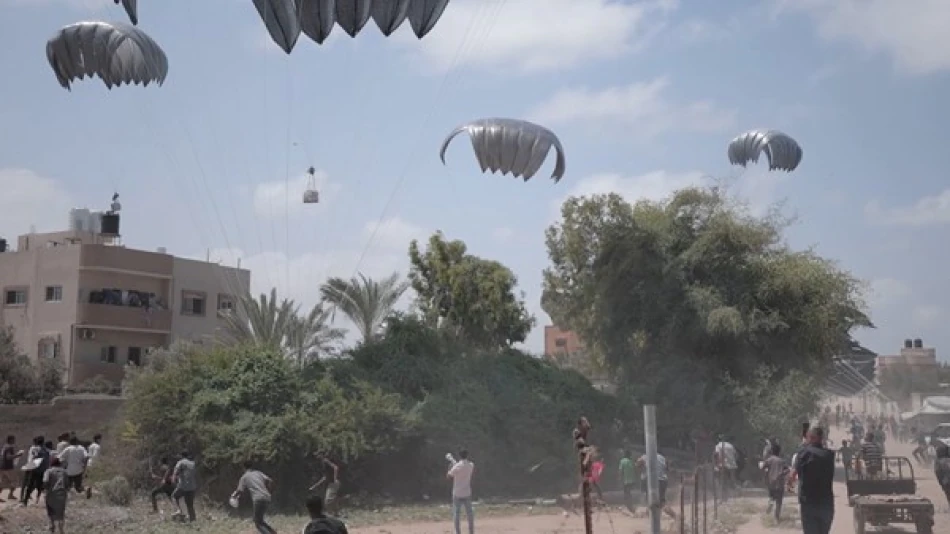
UAE Airlifts Vital Aid to Gaza in 66th Humanitarian Airlift
UAE Delivers 66th Airdrop to Gaza as International Coalition Expands Humanitarian Operations
The United Arab Emirates has completed its 66th humanitarian airdrop over Gaza, marking a significant milestone in what has become one of the largest sustained international relief efforts in the region. The operation, conducted under the "Birds of Goodness" initiative within "Gallant Knight 3," now includes six European nations alongside Jordan, demonstrating how the Gaza crisis has galvanized an unprecedented multinational humanitarian response.
Growing International Coalition
The latest airdrop involved aircraft from Germany, Belgium, France, the Netherlands, and Italy, working alongside UAE and Jordanian forces. This expansion of participating nations reflects the increasing international recognition that traditional ground-based aid delivery has become insufficient for reaching Gaza's most isolated areas.
The operation has now delivered over 3,873 tons of food supplies and humanitarian materials, specifically targeting regions that remain inaccessible by land routes. This tonnage represents one of the most substantial sustained airdrop campaigns since the Berlin Airlift, adapted for modern humanitarian crisis management.
Strategic Shift in Aid Delivery
Overcoming Ground-Based Limitations
The reliance on airdrops signals a fundamental shift in how international aid reaches conflict zones. Unlike traditional border crossings or truck convoys, aerial delivery bypasses ground-level security concerns and infrastructure damage, though it comes with higher costs and logistical complexity.
The UAE's sustained commitment—evident in 66 consecutive operations—suggests this model may become a template for future humanitarian crises where ground access remains compromised. Similar airdrop campaigns have been employed in Syria and Afghanistan, but rarely with such consistent international participation.
Regional Diplomatic Implications
The operation showcases the UAE's evolving role as a humanitarian hub in the Middle East, leveraging its advanced logistics capabilities and diplomatic relationships. By coordinating with both Arab neighbors like Jordan and European partners, the Emirates positions itself as a bridge between regional and international relief efforts.
This approach mirrors the UAE's broader foreign policy strategy of humanitarian diplomacy, previously demonstrated in Yemen, Lebanon, and during the Afghanistan evacuation. The inclusion of multiple European nations also reflects growing EU engagement in Middle Eastern humanitarian issues, potentially setting precedents for future crisis responses.
Operational Sustainability and Future Outlook
The scale and consistency of these operations raise important questions about long-term sustainability. Airdrops, while effective for immediate relief, cost significantly more than ground-based delivery and cannot fully replace comprehensive aid infrastructure.
However, the UAE's commitment to continue operations with regional and international partners suggests this model will persist as long as ground access remains limited. The involvement of European air forces also indicates potential for expanded capacity and shared operational costs, making the program more sustainable over time.
For humanitarian organizations worldwide, this coalition approach offers valuable lessons in rapid response coordination and burden-sharing during protracted crises, potentially influencing how future emergency relief operations are structured and funded.
Most Viewed News

 Layla Al Mansoori
Layla Al Mansoori






